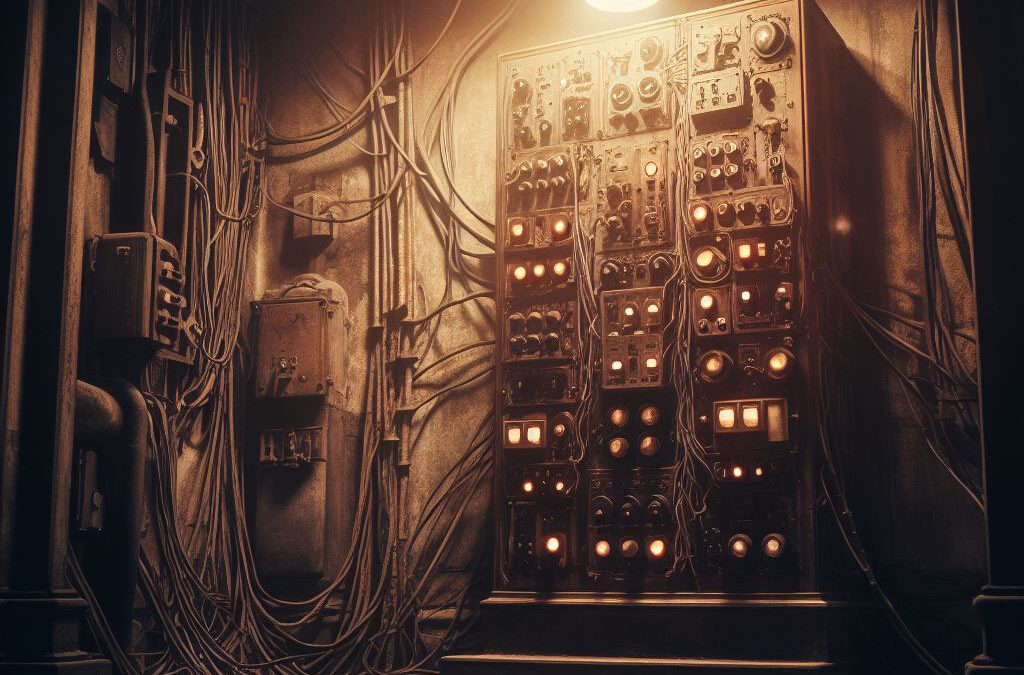Preserving the Past
There are several challenges with historic renovations that we as designers don’t encounter as often when facing modern construction. One main concern for MEP design is finding the right balance between preservation and modernization. As engineers, we strive for the latest and greatest in technology and performance to enhance comfort, safety, and efficiency. But when considering historic buildings, it’s essential to respect the original character while introducing modern systems.
Finding Balance
Historical Investigations: An in-depth historical investigation is a must. Understanding the building’s original construction techniques, materials, and original purpose can help us appropriately merge the past with the present.
- Code Requirements: Meeting modern building codes can be uniquely challenging within the given architectural space. MEP systems need to comply with current regulations, which means the design team must find ways to weave these elements seamlessly into the building’s original fabric and available footprint.
- System Efficiency: Achieving energy efficiency in a historic renovation can be a daunting challenge as well. Choosing energy-efficient MEP systems while minimizing their visual impact is crucial. From insulating the walls to selecting efficient HVAC systems or period-style light fixtures, these renovations must keep modern inhabitants comfortable.
- Adaptation: Rather than trying to exorcise the old completely, design teams must also consider adaptive reuse. Inviting natural ventilation and daylighting can reduce the need for modern HVAC and lighting systems, keeping the historical character alive.
Preserving Aesthetics
Preserving the original aesthetics of a historic building is paramount. In the realm of MEP design, here are some strategies to consider:
- Concealment: Whenever possible, MEP systems should be concealed from view, which is in stark contrast to the exposed design aesthetic popular in modern design. Ductwork, plumbing, and wiring can hide behind walls, beneath floors, or in the corners of the building, preserving its original appearance.
- Replication: Sometimes, the design may also call for replicating original elements of historic MEP systems. Skilled artisans can recreate lighting fixtures, heating radiators, or other components that seem to have come straight from the past, but still offer modern performance.
- Sensitive Material Selection: When new materials are required, select options that are in harmony with the building’s historical aura. Choose finishes and fixtures that pay tribute to the era when the structure was born.
Incorporating Technology
While we are keen on preserving the historic charm, embracing innovative technologies is also vital for ensuring the building is functional and sustainable. Here are a few to consider:
- High-Efficiency HVAC: Choose energy-efficient heating, ventilation, and air conditioning systems that can be discreetly integrated. They offer modern comfort without disturbing the visual lines.
- Smart Building Controls: Implement smart building control systems that allow for remote monitoring and efficient energy use. This technology improves building performance while staying hidden from view.
- Electrical and Lighting: Modern lighting technology can illuminate the darkest corners in a variety of fixture styles to match the historic charm. Opt for LED lighting, which can mimic the warm glow of the building’s original aesthetic while being energy efficient.
- Plumbing and Water Conservation: Use low-flow fixtures and greywater recycling systems to reduce water consumption, all while keeping the plumbing’s original design intact.
MEP design for historic renovations requires the expertise and collaboration of a team of professionals who understand and respect the historic elements and modern goals. Engaging experts experienced in historic preservation is essential to assuring the building’s story can be told for generations to come.

